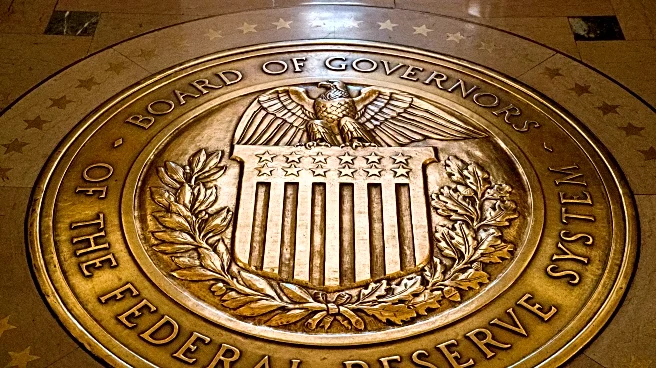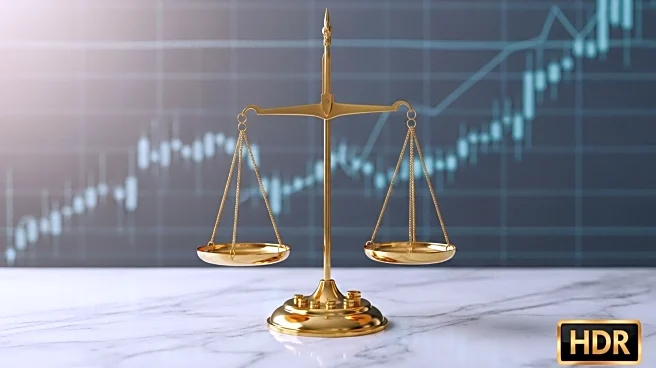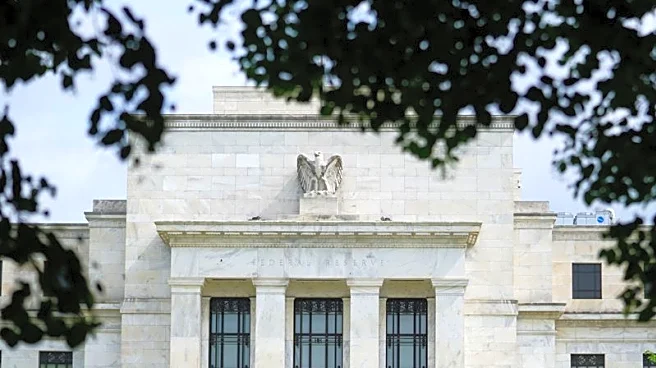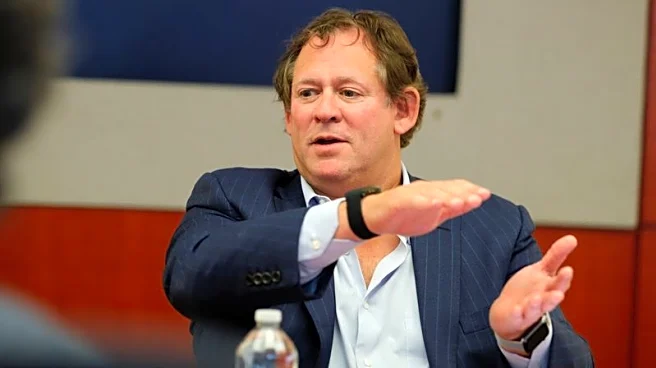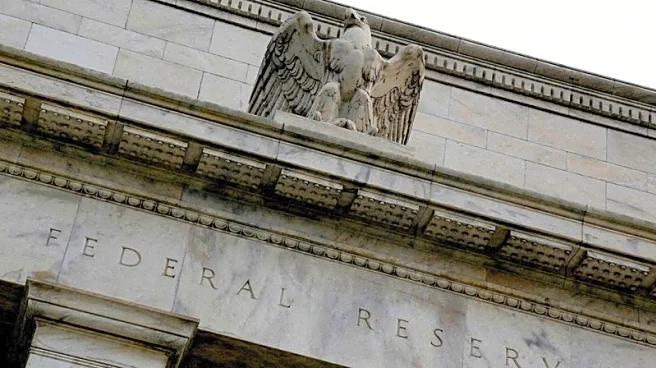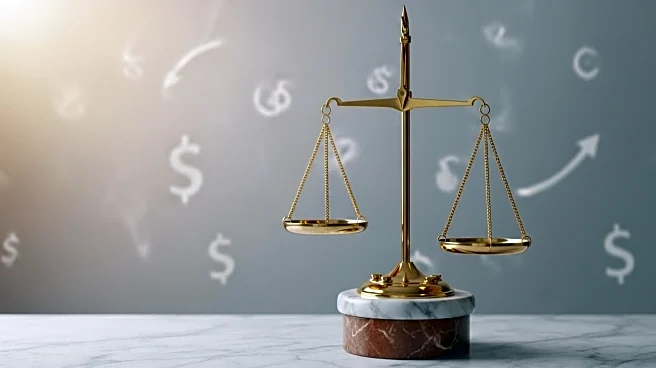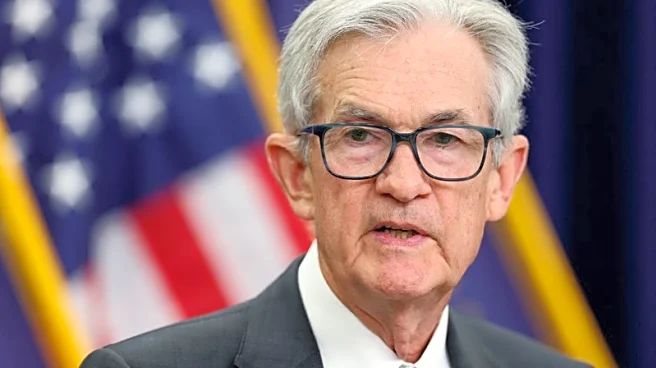What's Happening?
The Federal Reserve is set to hold a highly anticipated meeting where policymakers are expected to lower interest rates for the first time this year. The meeting comes amid pressure from the White House and deteriorating employment data. The Federal Open Market Committee's two-day meeting will begin on Tuesday, with a policy decision announcement scheduled for Wednesday afternoon. Market expectations, according to CME's FedWatch tool, indicate a 96.4% chance of a quarter-point rate cut and a 3.6% chance of a half-point cut. The current benchmark rate stands at 4.25%-4.5%. The meeting will also feature a 'dot plot' of forecasts on rates, inflation, and GDP growth from Fed officials, followed by a press briefing from Chairman Jerome Powell. The meeting dynamics are complicated by the potential participation of Stephen Miran, whose confirmation as a Fed governor is pending Senate approval. Miran's decision to take a leave of absence from his role as a White House economic adviser, rather than resign, has raised concerns about his vulnerability to pressure from President Trump.
Why It's Important?
The upcoming Federal Reserve meeting is significant due to its potential impact on U.S. monetary policy and economic stability. A rate cut could influence borrowing costs, consumer spending, and business investment, affecting the broader economy. The involvement of Stephen Miran, who has criticized the Fed's consensus-based approach, could lead to contested votes and challenge the typical unanimity in Fed decisions. Additionally, the legal battle involving Fed Governor Lisa Cook, who was fired by President Trump, underscores tensions between the administration and the Fed. Cook's lawsuit, which claims her dismissal was illegal, highlights concerns about the independence of the Federal Reserve. The outcome of these dynamics could have long-term implications for the Fed's ability to operate free from political influence.
What's Next?
The Federal Reserve's meeting is expected to feature dissents from some governors, including Christopher Waller and Michelle Bowman, who previously called for a quarter-point cut. Stephen Miran is anticipated to dissent for a larger cut, potentially leading to more contested votes. The legal proceedings involving Lisa Cook continue, with a federal court allowing her to serve while litigation plays out. The Trump administration is appealing the decision, arguing for the integrity of the Federal Reserve. The resolution of Cook's case could set a precedent for the administration's ability to influence Fed governance. The meeting's outcome and subsequent legal developments will be closely watched by stakeholders in the financial and political sectors.
Beyond the Headlines
The situation at the Federal Reserve highlights broader concerns about the independence of U.S. monetary policy institutions. The legal and political challenges faced by Fed officials could have ethical and governance implications, potentially altering the balance of power between the executive branch and independent agencies. The pressure from President Trump and the involvement of Stephen Miran may signal a shift towards more politically influenced monetary policy decisions, raising questions about the long-term stability and credibility of the Federal Reserve.


